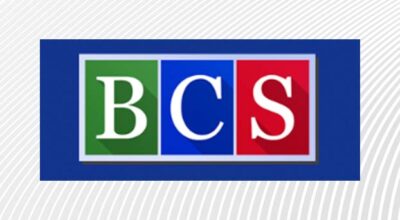Mobile classroom on the way out of Chocowinity
Published 7:51 pm Tuesday, March 13, 2012

Beaufort County school leaders, meeting Monday with Chocowinity town officials, promised to phase out a modular unit (above) used at Chocowinity Middle School to house four classrooms. (WDN Photo/Betty Mitchell Gray)
Responding to concerns from Chocowinity town leaders about the continued use of modular units at schools in the community, the county’s top school official promised Monday to phase out the temporary building at Chocowinity Middle School.
“We’ll come back in about a month and let you know what we can do with that unit,” Beaufort County Schools Superintendent Don Phipps told Chocowinity town officials. “We can’t plan to go on with the modular unit for another year.”
Beaufort County Board of Education member Terry Williams agreed.
“The Town of Chocowinity has gone way beyond working with us,” Williams said. “We need to take care of that soon.”
Phipps and members of a board committee charged with overseeing the public school system’s buildings, grounds and finances met with Chocowinity Mayor James H. Mobley and other town officials at the school to discuss the town’s concerns.
Phipps said he would work with Chocowinity Middle School Principal Dale Cole to develop a plan to eliminate the need for the mobile unit by the start of the 2012-2013 school year.
The Chocowinity Board of Commissioners extended the approval it granted some years ago for so-called “temporary” classrooms at the school.
In previous meetings with school officials, town commissioners expressed concerns that the “temporary” classrooms were becoming permanent fixtures at the school. The town’s leaders also have criticized the school board for ignoring growth in the community’s population and the resulting increased need for space in the schools within the Chocowinity district.
Some of the factors that have led to the use of mobile classrooms at Chocowinity Middle School could change in the coming years, Phipps said.
About 30 students have chosen to attend the school as a result of testing scores at Snowden Elementary School under provisions of the federal Elementary and Secondary Education Act, also known as “No Child Left Behind.”
Those numbers could drop if North Carolina receives a waiver from the federal government from some provisions of the law.
Phipps said the school district expects an increase of about 20 students next year at Chocowinity Middle School over the current school year, but it anticipates a drop in enrollment for the next three years, based on the number of students who will move to the school from Chocowinity Primary School.
Town leaders said those numbers could change with the construction of new housing development and the expansion of existing housing developments that are planned for locations that fall within the Chocowinity school attendance district.
They also pointed to new sewer projects planned for the coming year that could also lead to population growth within the district.
“It seems to me that we are growing quite a bit,” Mobley said.
Phipps said such questions concerning future population growth in the Chocowinity attendance district support the argument for a population study to accompany the recently released study of school-construction needs.
The school board plans to ask the Beaufort County Board of Commissioners for $17,500 to fund a study of future county population growth by the Institute for Transportation Research and Education at N.C. State University, Phipps said.
“Facts ought to guide” the school system’s decisions about future school needs, he said.
Williams agreed.
“We need a long-term plan based on where we’re heading. We need more facts,” he said.
Chocowinity officials also said improvements need to be made to the school’s parking lot because traffic often backs up on U.S. Highway 17 Business while parents are waiting in line to pick their children up after school.





